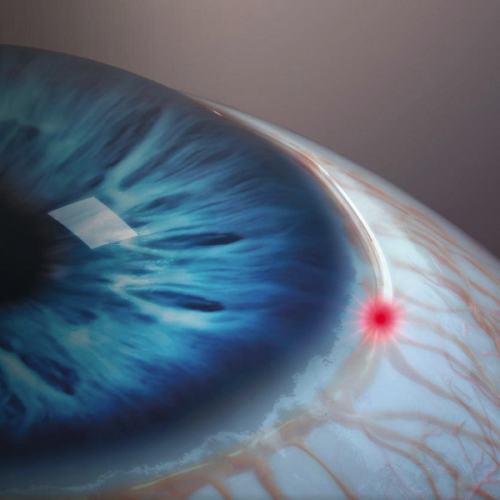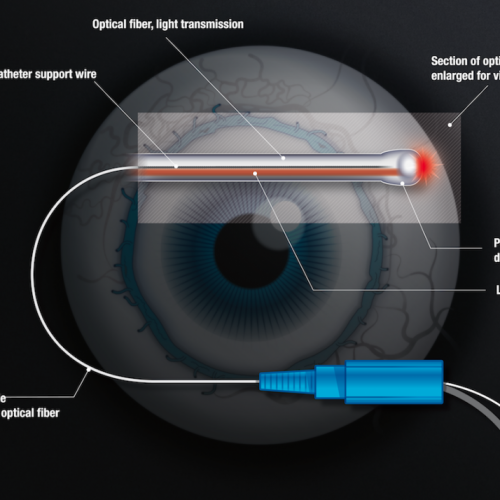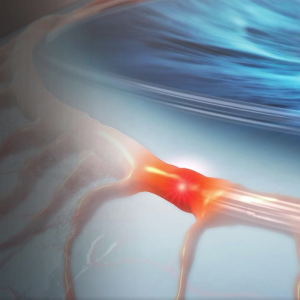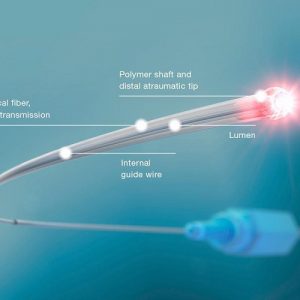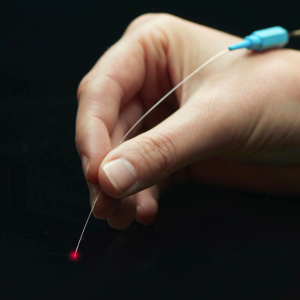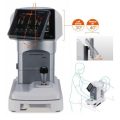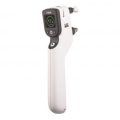No tissue damage, no stents or shunts
Performed with the iTrack™ surgical system from Ellex, ABiC™ comprehensively addresses blockages in the collector channels and flushes the outflow channels without damaging tissue and without leaving behind a stent or shunt.
- Restores the natural outflow pathway —safely and efficaciously
- Addresses all outflow pathway resistance points — atraumatically
- Comprehensively addresses blockages in the collector channel ostia
- Can be performed in conjunction with cataract surgery, and as a standalone procedure
- Can be performed across the entire glaucoma disease process — before, and after, other MIGS
- Delivers 30% reduction in mean IOP and a 50% reduction in medication dependence1
Access, catheterize and viscodilate
ABiC™ re-establishes the eye’s natural outflow system by accessing, catheterizing and viscodilating the trabecular meshwork, Schlemm’s canal, and the distal outflow system. 360º viscodilation of Schlemm’s canal can separate the compressed tissue planes of the trabecular meshwork, causing any herniated inner wall tissue to withdraw from the collector channels. This complements the mechanic opening achieved via the circumnavigation of the iTrack™ microcatheter through Schlemm’s canal.
Removing the guesswork from MIGS
The most defining aspect of ABiC™ is its comprehensive approach. To date, ABiC™ is the only minimally invasive glaucoma surgery that successfully and comprehensively addresses all aspects of potential outflow resistance. This contrasts with other MIGS procedures, where only a segment of Schlemm’s canal is addressed, or where the trabecular meshwork is targeted in isolation. When using a stent-based MIGS there is a risk that the area of blockage will be missed or sub optimally treated.
Reduce medication dependence safely and effectively
ABiC™ performed with the iTrack™ surgical system is both safe and effective. On average, it achieves a reduction in IOP of 30% and a 50% reduction in medication dependence.1
Standalone or complementary
Intuitive and efficient, ABiC™ can be performed as a standalone procedure, or in conjunction with cataract surgery.
ABiC™ can also be deployed synergistically with Selective Light Therapy (SLT) to control IOP by restoring the natural outflow pathways. SLT stimulates cellular regeneration to create a healthier, more porous trabecular meshwork structure, and achieves an average 30% reduction in IOP when used as a first-line therapy. Additionally, ABiC™ can be used in conjunction with other MIGS devices or treatments — and, as an atraumatic procedure, it does not preclude future treatment options.
1. 228-eye ABiC 12-Month Case Series Data, presented at ASCRS 2016. Data on file. Ellex Medical.

